The End and the Beginning of Human Planet
by Dale Templar, Series Producer
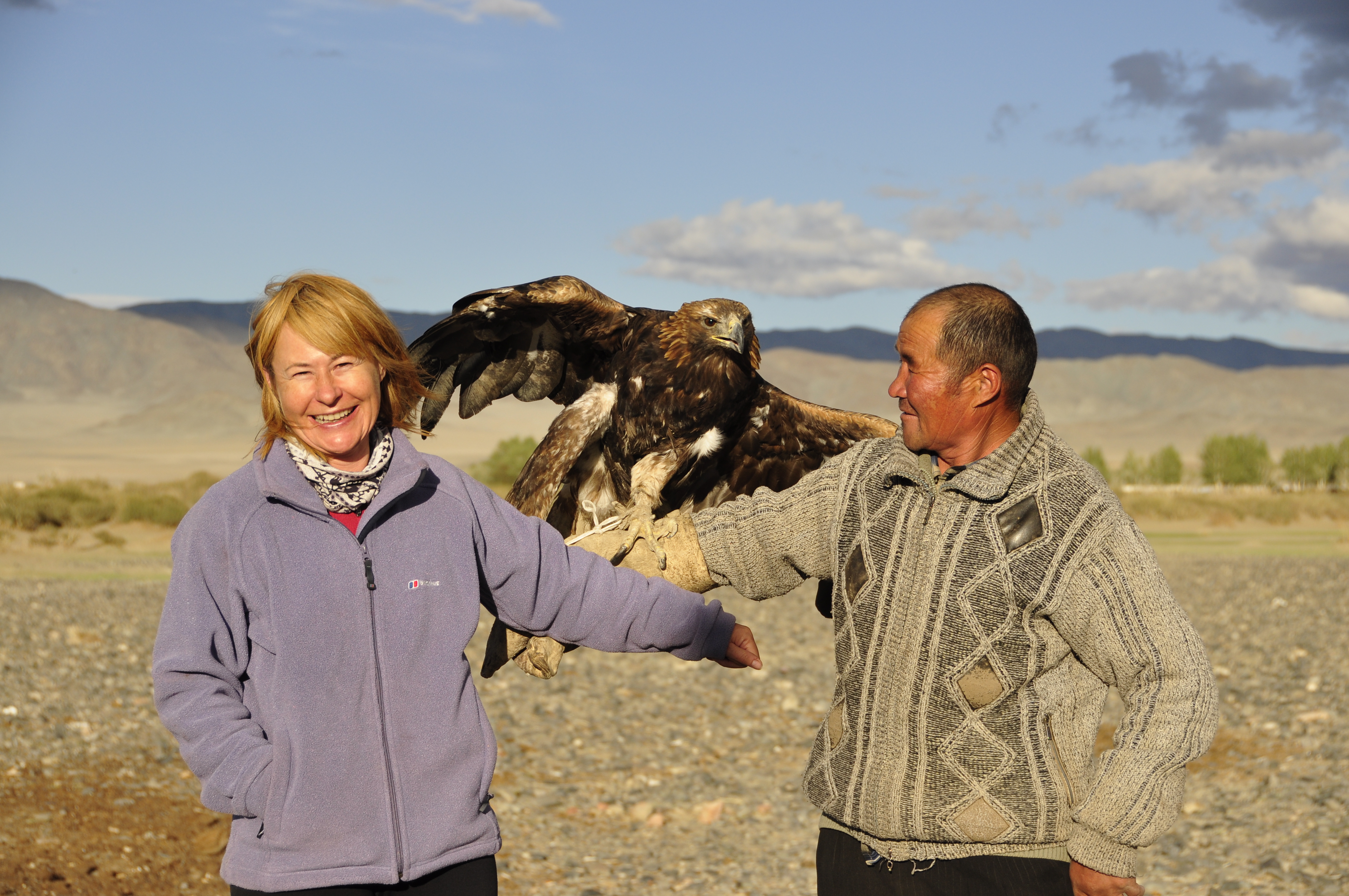
Dale pictured in Mongolia on a shoot to film the Eagle Hunters sequence from the Mountains programme.
Last Thursday saw the final episode of Human Planet transmit in the UK. I had mixed feelings as I watched the end credits roll for the last time. After three intense years, sending teams to over 70 locations including some of the remotest places on earth, this really did mark the end of the formal production process on the series. It is always sad when a production ends. Virtually all of my amazingly talent team have gone - many already on new adventures around the world. There is literally just a handful of us left in the Bristol and Cardiff offices.
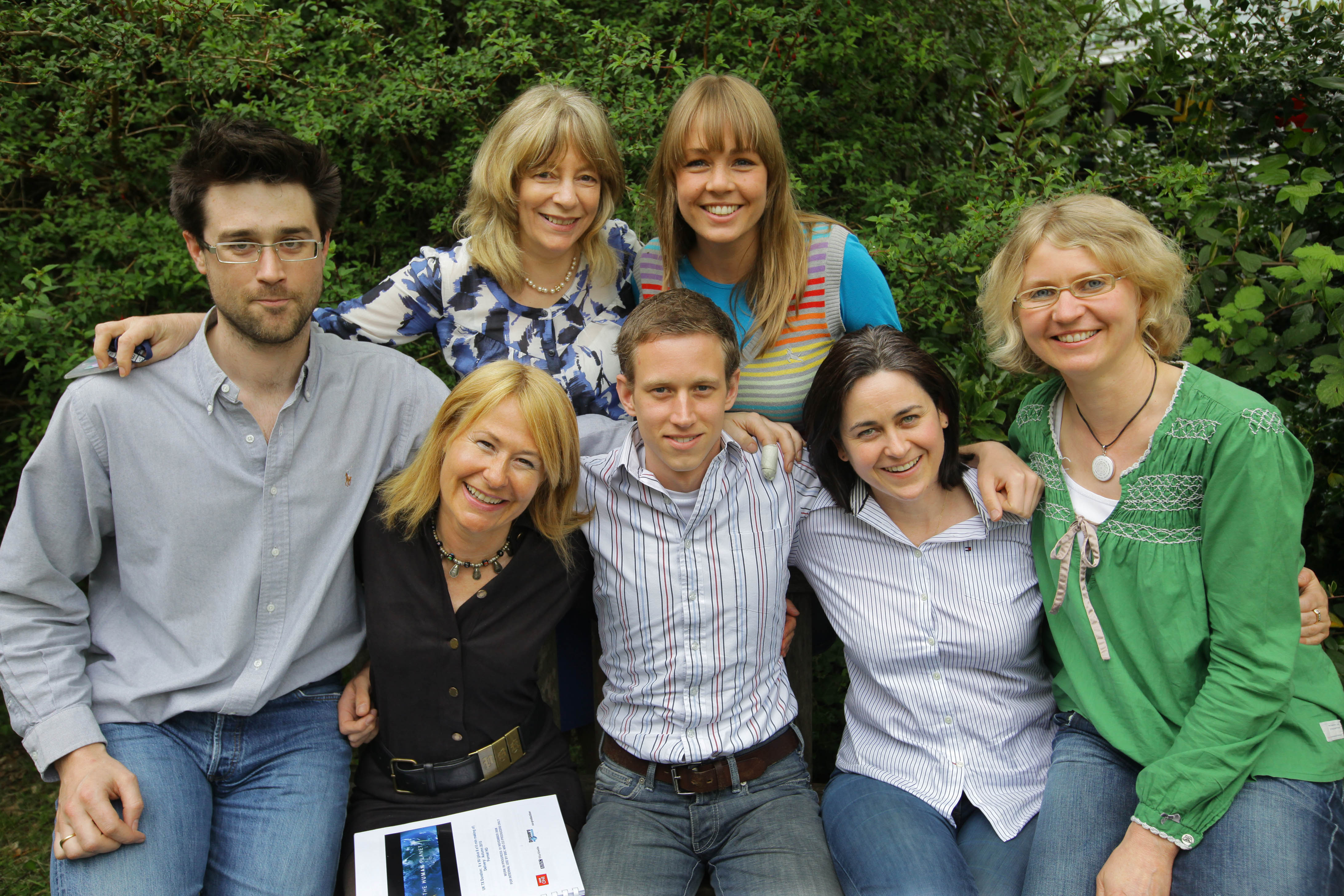
Dale with some of the Human Planet team. From left - right (front) Edit Assistant Craig Haywood, (Dale), Technical Co-ordinator Jasper Montana, Production Co-ordinator Isabelle Corr, Production Manager Alison Brown-Humes. (Back) Production Management Assistant Julia Wellard, Production Co-ordinator Jo Manley (Photo copyright Timothy Allen 2010)
But Human Planet has been different from any other programme I have ever worked on. Normally the last UK transmission would be the end of the series. For Human Planet it feels like a new beginning. For a start I am still in slight shock at the amazingly intense and positive reaction we have had to the series from people of all age groups. The series has been praised by members of the Royal Geographical Society, it’s been the focus of talk and gossip around office water coolers and it’s been making news particuarly online. I’m especially pleased that the series has connected with a younger audience - there’s been a buzz on Twitter and Facebook and millions of hits on You Tube. One young mum told me her 3 year old son was a huge fan of Human Planet, watching every episode without fail! No programme maker can ever be sure of a hit. This is a very fickle industry and audiences can never be guaranteed even when you’ve made a landmark series for the BBC. The feeling is that Human Planet is a fresh and different type of landmark. Many people, even those who don’t normally enjoy natural history have become hooked on humans!
Personally I hope this new found passion for humanity will continue. The series is a spectacular snapshot of the diverse human world we live in. But the world is changing fast, very fast. It’s becoming increasingly hermogenised. Even now one City looks much like the next - same Starbucks , same McDonald’s. Human Planet filmed with people who still directly depend on the natural world for their survival but their wisdom and customs may soon be disappear. The human species cannot be set in aspic but I think many of the stories we filmed will be gone within the next 10 years.
So what next? The series is now out on DVD/Blu-Ray and the book is in the shops. Next month it jumps across the Atlantic to be shown on Discovery Channel (a different version from the one showing in the UK) Then the UK version will start being shown on television around the world. So look out for Human Planet in your neck of the woods! Hopefully the BBC will commission a second series, watch this space…
So hopefully the end is truly just the beginning…I can only hope that this series sparks an interest in the challenges facing our human planet and that more is done to protect the incredible diversity, languages and cultures of our magnificent species.
Long live the Human Planet and all that sail on her!
Where are the Fish?
by Rachael Kinley, Researcher, Oceans and Jungles team
Of the three months that I’ve been on location for Human Planet Oceans shoots, over half of this time has been spent waiting for fish to appear. Off the shores of three continents, from sunrise to sunset, we’ve searched the open seas desperately hoping for some ‘sign’ that they are on their way.
First it was waiting for migrating mullet in Mauritania. The idea was to film with the Imraguen people who inhabit the Bank D’Arguin National Park and fish the huge numbers of mullet that pass through their waters each year. Every day for two weeks we optimistically headed out to sea in the fishermen’s dhows, but the mullet never arrived. Was it the moon, the wind or the water temperature? We will probably never know but after much debate we reluctantly decided to call off the shoot.
Then we moved on to Laguna on the coast of southern Brazil to try again to film a similar story. It was hard to decide when was the best time to go as the local fishermen seemed to have wildly conflicting ideas of when the mullet season actually occurred. In the end we embarked on our trip in mid May and although at first it looked as if we were going to be unlucky for a second time, after spending three weeks on location we finally managed to film fishermen hauling in impressive numbers of fish.
OK, so we were successful, but it was touch and go for quite a while and I swore I would never go on another shoot that depended on fish turning up. But what do you know, this October I was off again on another wild fish chase. This time it was off the coast of Palawan in the Philippines, sailing for fourteen hours a day for seven days with deep sea diving fishermen desperate to land a big catch. Sitting out at sea on a boat in the tropics, overlooking palm tree fringed sandy beaches, is not the worst place in the world to be left in limbo, but after days on end of no filming opportunities and burning our budget, even paradise can lose its appeal. But as so often seems to be the case on Human Planet shoots, on the very last day we finally managed to net something spectacular enough to make the cut.
We had what we needed, but I was dismayed to hear that even this catch was half the size of those that the fishermen said they used to get. The problem was not that the people had been lying to us about when and where the fish come in, nor that they had lost their traditional skills, but that there are no longer plenty of fish in the sea. Although newspapers and documentaries such as End of the Line tell us that global fish stocks are declining, as we still see plenty of fish on our supermarket shelves, it is all too easy to ignore the warnings.
I myself was aware of the problem, but it was really brought home to me by witnessing first hand how barren the seas of the world have become. At first the persistent lack of fish on our shoots seemed little more than the annoying bad luck that can plague any film shoot, but talking to people whose lives and livelihoods depend on maritime resources, I have become increasingly aware that diminishing fish stocks are becoming a huge problem affecting millions, if not billions, of people around the world. Having seen just how hard the lives of some of these people are already, I hate to think how they will survive if the fish disappear altogether.
Dale Templar - Series Producer - Human Planet
Heartache for Haiti
About six months ago, I sent assistant producer Willow off to do a recce in Haiti. We were looking for a place to show the huge destructive force of hurricanes and Haiti is regularly caught in the path of the worst storms that sweep through the Caribbean. Ironically, we never filmed in Haiti; in the 2009 season the hurricanes chose other paths. It was a bitter-sweet failure for the series. Willow and I were both aware we’d wasted time and money but also felt secretly pleased that the people of Haiti had escaped yet more devastation and destruction for another year. We could never have imagined the cruel twist of fate that would hit them just months later. Of all the places on Earth for a earthquake of this magnitude to hit. On her trip , Willow was given an insight into the desperation, poverty and hopelessness faced by the majority of the Haitian population. Hours after the earthquake, she and I talked on the phone, both unable to take in the enormity of the disaster. She had been there, I had made films after the Kobe Earthquake in Japan and in Banda Ache following the Boxing Day Tsunami. The hearts of the Human Planet team go out to the people of Haiti. Maybe, just maybe, something good will come from this.
Ground Control (to PD Tom!)
by Joanna Manley, Production Coordinator, Jungles/Oceans team
Being the Production Coordinator on the Jungles and Oceans team means I’m responsible for sending Tom, Charlotte, Willow and Rachael to Jungles and Oceans all over the world. I seem to be in a constant state of organised chaos and even though I get left behind with the damp life jackets and lingering smell of the Jungle whilst the team flies off to the next amazing destination, I love my job and my team.
I have several time zones set on my phone which I continuously update as teams leave, come back, move on and go out again. It’s sometimes difficult to keep track of where everyone is and invariably they all phone at the same time (usually just as I’m trying to get some lunch!) needing a new camera, flights changed or just someone back in reality to talk to when they’re in the middle of a wet jungle with broken kit and infected feet!
On Human Planet we’re often dependent on people and animals being the same place at the same time when the conditions are right. This is how not to do it….
We had;
Jon in Indonesia trying to film a Whale Hunt close to two earthquakes
Charlotte trying to film a shark whilst there was a tsunami warning for the area
Willow in Bristol trying to track Hurricanes to film in the Caribbean and there weren’t any
Tom and Rachael leaving for the Philippines to live on a boat for 7 days in the midst of the worst typhoon season the Philippines have seen in years.
How typical!
With so many shoots going off and coming back and with heaps of kit needed, our office has got a reputation for a being a bit of a muddle. Danny who delivers post to our office says he has nightmares about it and grumbles it’s like an assault course trying to get from one side of the room to the other. To be honest he’s right, especially as there is a camouflage theme to a lot of the objects such as hammocks, tarps, tents and thermarests. We’ve got wetsuits and life jackets hanging off the back of the door, waterproof bags and jungle ponchos in a heap behind my desk with a solar shower perched on top and on Tom’s desk at the moment is a pile of coconut shells used to call sharks in Papua New Guinea.
My two sets of desk drawers are filled with all sorts of things not usually found in an office drawer…
Muddy batteries from the jungle
Leaking bottles of anti mosquito repellent
Boxes of antibacterial hand wash
A box of latex gloves for covering radio mics
Several dead Central African Republic bees
A tangle of 4 way plug adaptors and extension leads
I’ve got a heap of tapes, gaffer tape and loose cable ties all over my desk and a pair of size 12 flippers along with three Mauritanian jilbabs the team wore whilst filming in Mauritania to the side of my drawers.
Even though I don’t get to see the places we’re filming in person I get a good idea of what’s it like there even before I see the footage. From the smells emerging from their kit bags when they get back, to the sound of pouring rain and bugs I hear in the background when I’m talking to them on the Satellite phone.
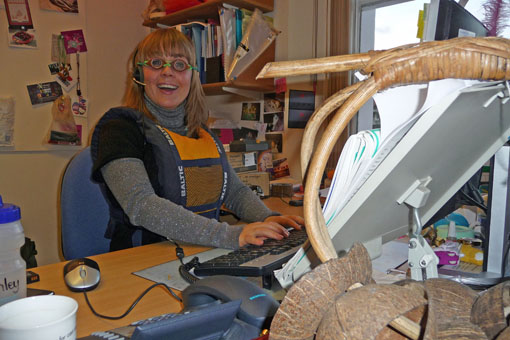
You need a sense of humour in this job! Here I'm wearing wooden goggles from Bajau divers and a lifejacket, next to some shark-calling coconuts
Our next shoot is going off to Brazil on 8th January so we’re battling through our Christmas party hangovers to get everything packed up and ready so we can take a much needed break before another crazy year on Human Planet starts!
Haiti and hurricanes
by Willow Murton, Assistant Producer, Oceans/Jungles team
Leaving Haiti I say my goodbyes and hope that I don’t visit the people that I have come to know again this year. For the first time after a recce, I really do hope that I don’t come back. Because if I do, it means the people of Haiti will have been hit yet again by a destructive storm.
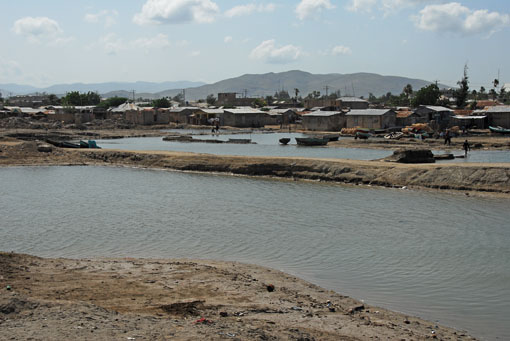
The calm after the storm - Gonaives, Haiti
For many people, Haiti is synonymous with violence, gun fire cracking over destitute slums, the sound of voodoo drums, a dark mysticism. When I said that I was coming here, some friends looked at me with envy and said that they had always dreamt of going on holiday to Tahiti. Those who heard right looked at me with curious interest and concern. Their eyes were full of the preconceptions that spring from a country whose history begins for many with disease and exploitation. More recently, it has been written by the devastating statistics of its poverty and the language of disaster in the face of social unrest and tropical storms which have hit the country. And so I set off, with the envious gaze of the mistaken and the worried glances of the better informed.
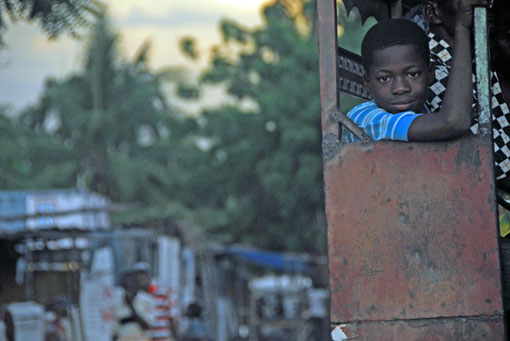
Passenger on a bus in Port-au-Prince
Recces are one of the best parts of this job. You get to be professionally nosey and personally privileged in places that you would never visit otherwise. This is certainly one trip that I would not have imagined making and it still does not feel real until the doors of Port-au-Prince airport open. The tensions and aggressions that I expected to meet me in the Haitian capital are nowhere to be seen. I am struck by the apparent calm, masked in the chaotic bustle of the traffic and roadside. A bored UN policeman, a check point on a road dented with potholes, intercut with colourful tap-tap pick-ups crammed with people. Whilst I have a glimpse of the reality of life about me, I too am on the sidelines, looking out at the passing world. This feeling comes back to me time and time again on the trip. Perhaps it is the distance between the cool air-conditioned rooms of the hotels where we stay at night and the hot, dusty shacks that we visit in the day.
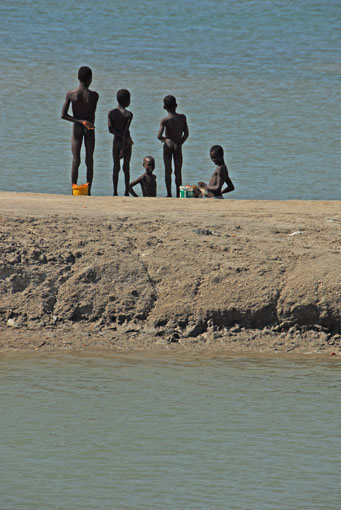
Boys standing on flooded salt ponds
The shoot however will be an immersion, literally. Following a family through a storm and following floods is not something that is easy to plan. I have become an amateur storm chaser, scouring weather charts and learning the grammar of waves and wind. For all the guidance that I am given, there is no way to predict the track of the storms with any certainty. Had there been a way, the people of Gonaives would surely not have found themselves so unprepared for the four storms that struck the town last year, bringing deadly floods and taking lives and homes.
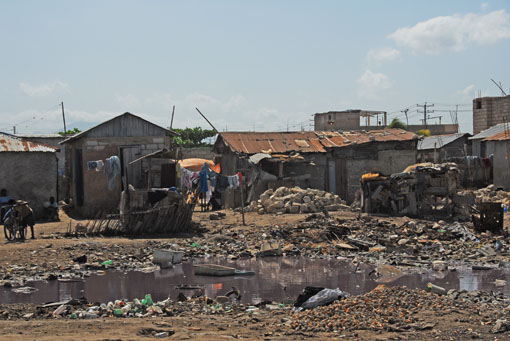
Devastation in Gonaives after last year's floods
Mountains of dusty rubble dug from the houses still sit in the streets, flanked by blocked canals, lottery stalls and the wrecked shells of cars. At the edge of the ocean, a small group of fishermen gather, making boats and talking, as children and pigs run about amongst piles of empty conch shells. A little boy flies a kite, made from a plastic bag, over a cluster of ramshackle huts. On a door, the words “Site Ana” are sprayed. The settlement is new, named after the storm, Hurricane Hanna, that took the previous homes of the settlers. Children swim in the pools of water beyond, around the ruins of a building she flooded. Crude fishing boats sail out over former salt plots. Life continues in the remains of the storms.
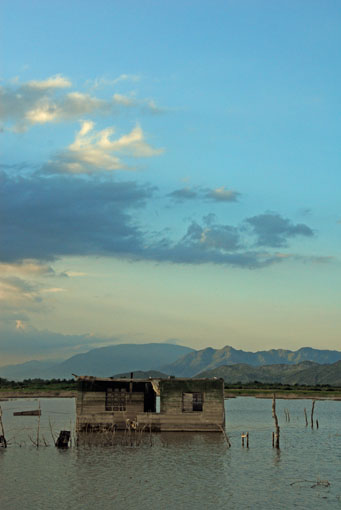
A flooded house a year after last year's floods
There is an inevitability to the fate of the people who live here which is openly admitted. It is disarming. They have no choice but to stay, to adapt, to reclaim the small spaces of land, the snatches of life that they can. Last year, the families in some corners of Gonaives spent months living on roof tops. Neighbours who had houses with two storeys offered shelter to those without. Fear, loss and finally survival were shared under stormy skies. I still have no idea what story we will be able to tell this year but I hope that it is one which finds that same strength of humanity in the eye of a storm I pray never comes, even if the cold statistics say it will.
Dale Templar - Series Producer - Not so Natural Disasters
When Willow came back from Haiti last week and showed me the photos of Gonaives I was instantly transported back. I have location directed two films telling the stories of the aftermath of what we call a “natural disaster”. The first was the 1995 Kobe Earthquake in Japan. The second was the more recent tsunami, where I filmed in Banda Ache in northern Sumatra, the place where quarter of a million men, women and children perished. Like Haiti, Ache was already classed by the BBC as a “hostile environment” even before the disaster. As I travelled from the airport, which was inland and relatively untouched, we headed towards the coast. Soon the twin natural forces of both a powerful earthquake and the massive tsunami waves started to reveal themselves. I was prepared for the earthquake ruin, I’d seen so much in Kobe but I wasn’t prepared for the scene as I neared the coast. A few months earlier this had been a packed fishing community. Well over a kilometre from the sea shore, there was nothing, just nothing. The ocean had taken everything. When I saw Willow’s recce material the memories of Ache came back, I understood her confusion and disbelief.
It’s called a natural disaster for good reason but when you see it for yourself there is something so viscerally un-natural about it. Somehow it just isn’t right, isn’t possible. On both occasions I was telling the story of the people who had against the odds survived the very worst nature could throw at them. You come away with an insight into two of the great strengths on this Earth, the force of nature itself and the power of humanity.
Welcome to Human Planet
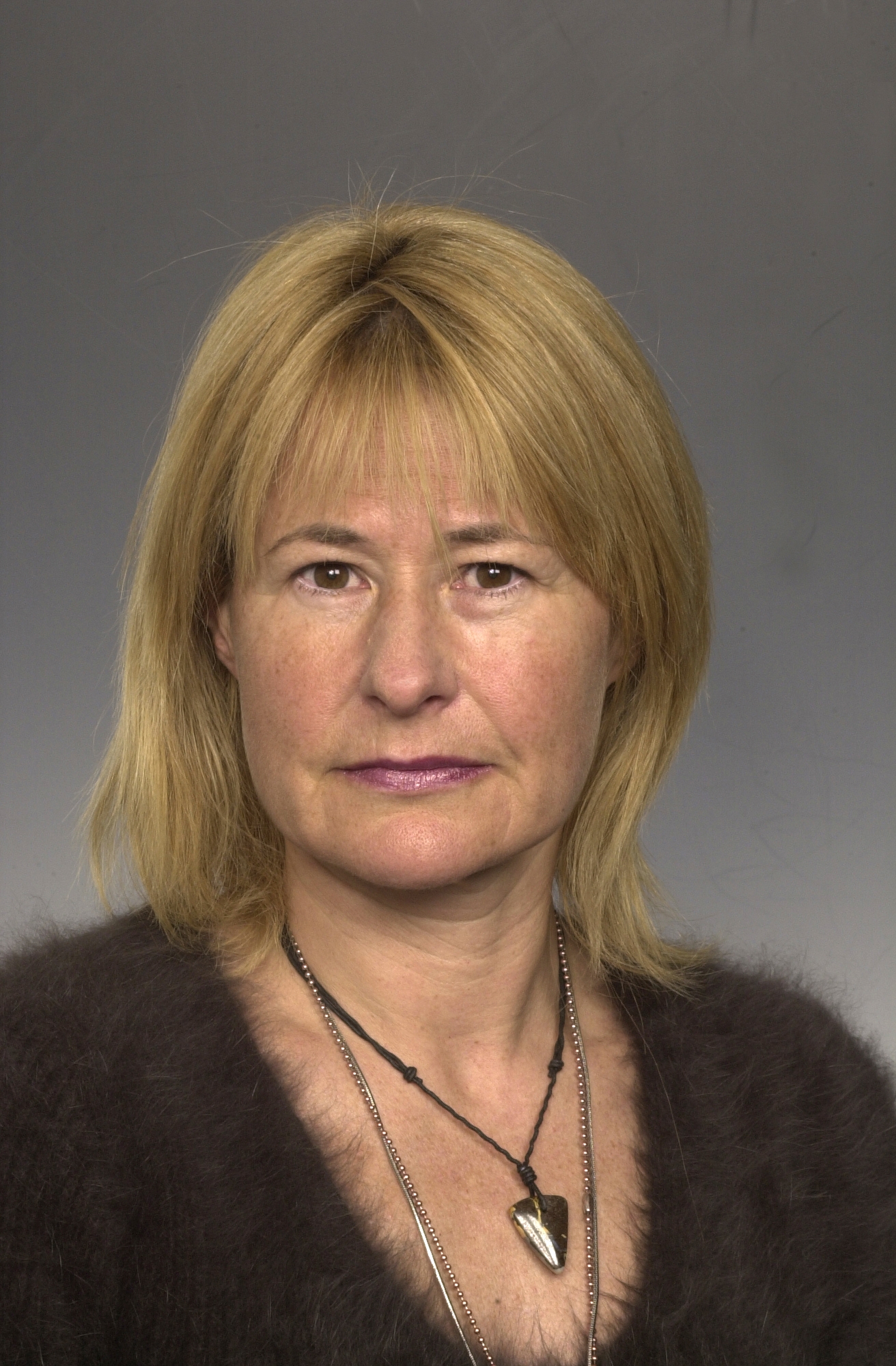
Dale Templar, Series Producer
by Dale Templar, Series Producer
So what is Human Planet? Human Planet is a new 8×50 minute landmark documentary series being made by BBC Television. The series celebrates the human species and looks at our relationship with the natural world by showing the remarkable ways we have adapted to life in every environment on earth. It is due to be transmitted in the UK in the New Year 2011 and will be rolled out across the world soon after.
The production team is split across two sites, one in Bristol and one in Cardiff.
In BBC Bristol we are part of the world renowned Natural History Unit. You may have heard of us, but if not, you’ve probably watched some of our programmes. Many have been presented or narrated by Sir David Attenborough, like Planet Earth and Blue Planet. Most recently we’ve just finished Nature’s Great Events which our own executive producer, Brian Leith, worked on.
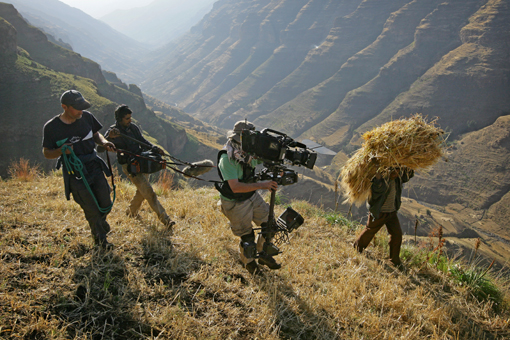
BBC Human Planet : Simien Mountains
BBC Wales, based in Cardiff, are probably best known in the UK right now for producing high end popular dramas like Doctor Who. Torchwood, another sci-fi doc that comes out of Cardiff, is also an HD production and Human Planet will be using the same excellent post-production facilities. The factual department is best known for its ground-breaking anthropology documentary series Tribe.
In total we have a core team of 20 phenomenally talented programme makers, who come with a wide range of skills and experiences. Working with us are some of the best wildlife and documentary camera crews and fixers in the world. For the first time we have a dedicated stills photographer, Timothy Allen, who will be posting his own Human Planet blog every week at http://timothyallen.blogs.bbcearth.com/
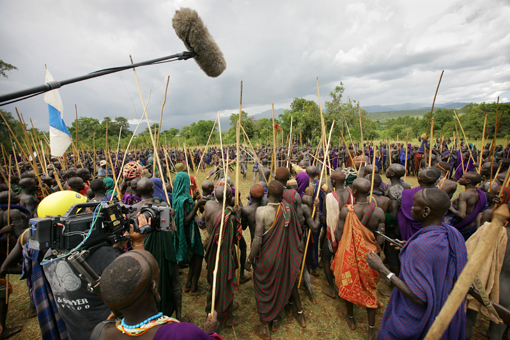
BBC Human Planet : Suri stick fight
The series started in full production in the summer of 2008 and we will be shooting over 70 stories in some of the most remote locations on earth in around 40 different countries.
Each episode will focus on one single environment: desert, jungles, arctic, grasslands, rivers, mountains, oceans and urban. Many of the stories are extremely dramatic and will show how we have successfully adapted and survived in the most challenging places on the planet.
As from next week each member of the team will be blogging their stories from the Human Planet. I will keep you updated on where everyone is and give you general news about the series.
Currently, we have teams that have just come back from the remote southern region of Mongolia, filming for the desert episode. On location are the Jungles and Mountains team who are in the Central African Republic and Nepal. I’ll let you work out which team is where!
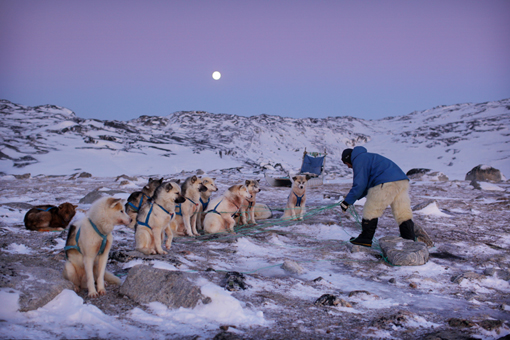
BBC Human Planet : Arctic Dawn
That’s it for now …enjoy the photos and the sneak preview from the series. See the link if you’d like to read what Timothy Allen’s been up to and don’t forget to explore the new BBC Earth site too. Look out for the regular Friday posting from the Human Planet team, with fascinating stories and tales from both our many locations and from the office.
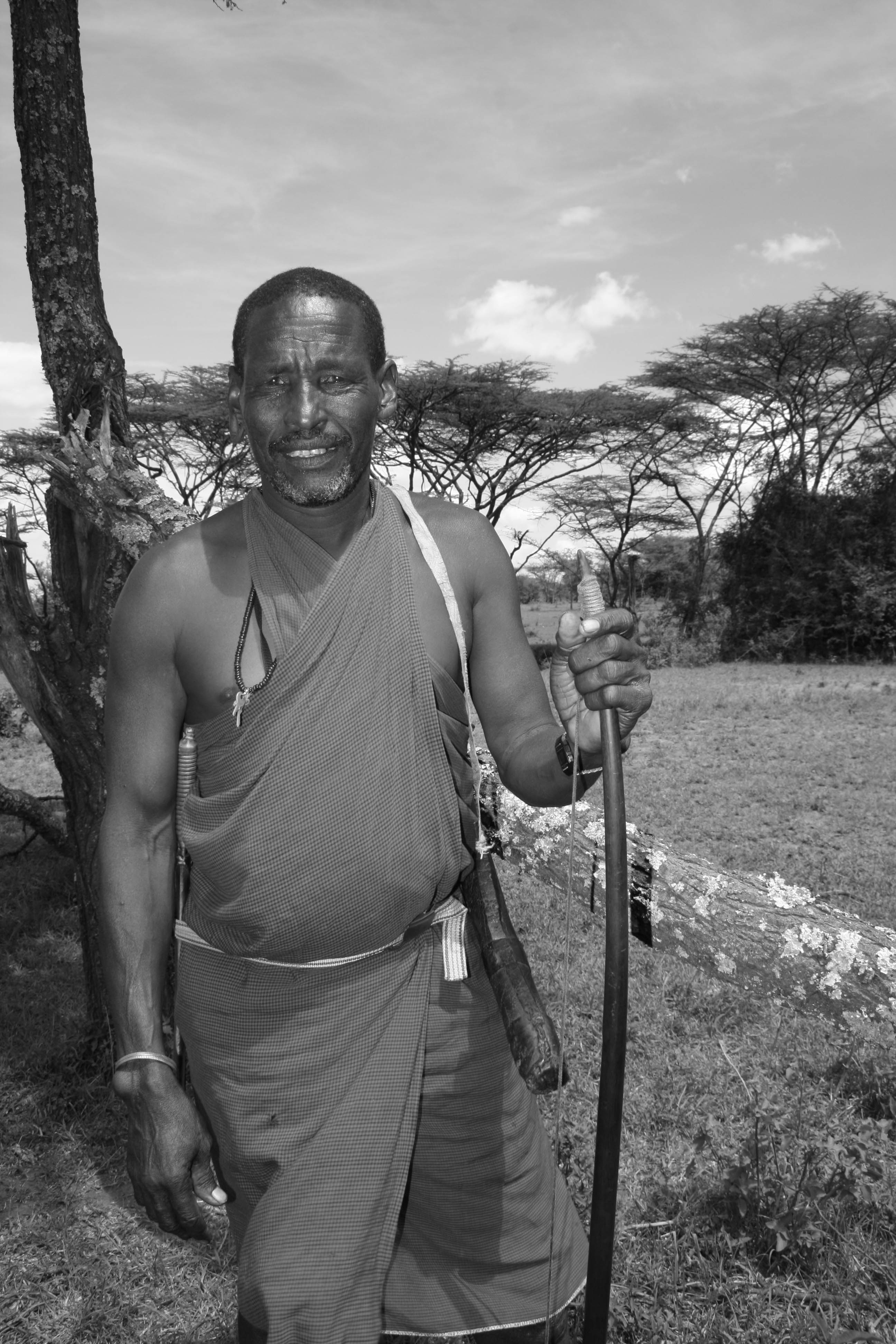

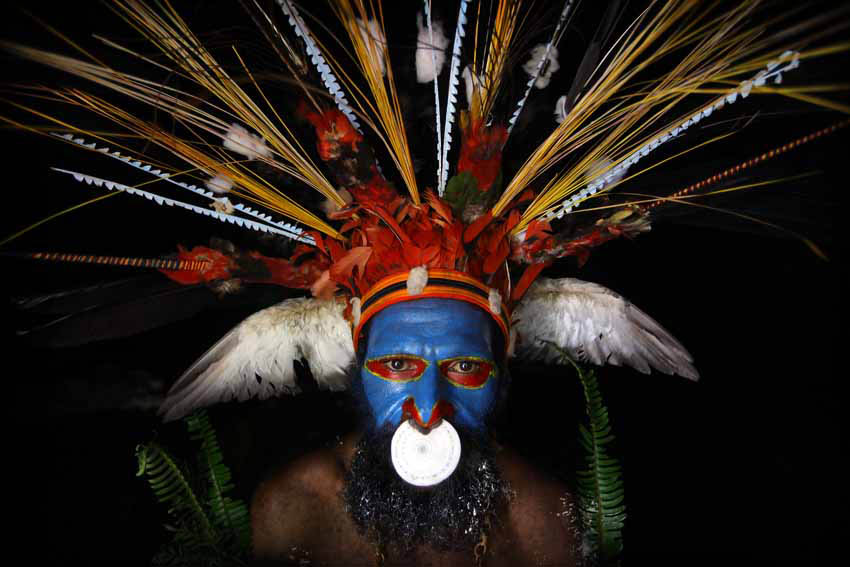
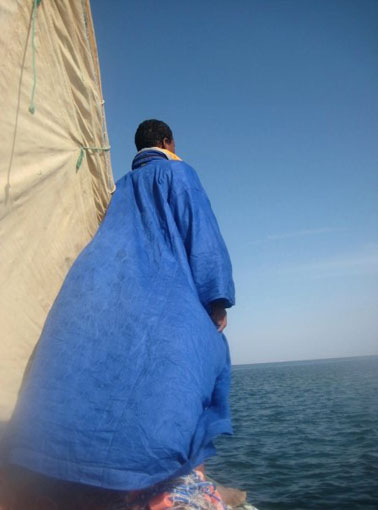
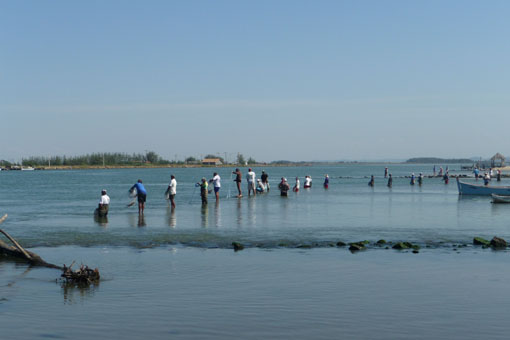
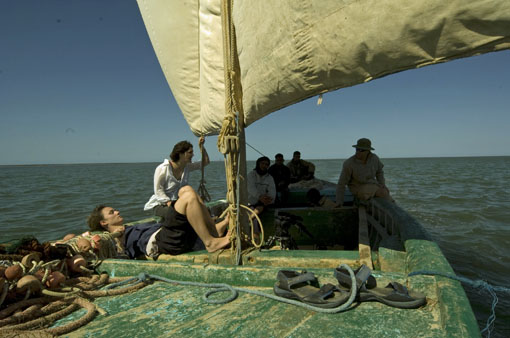
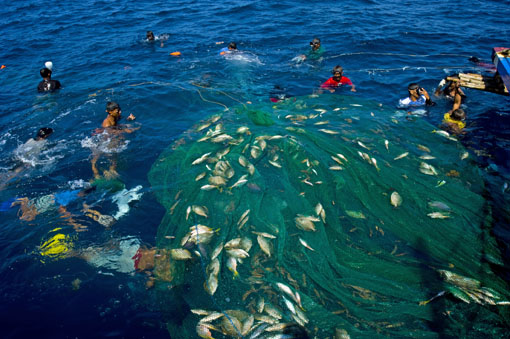
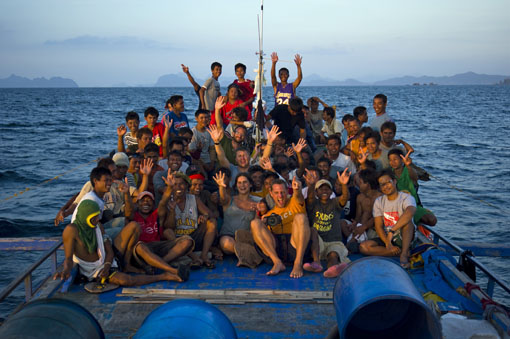
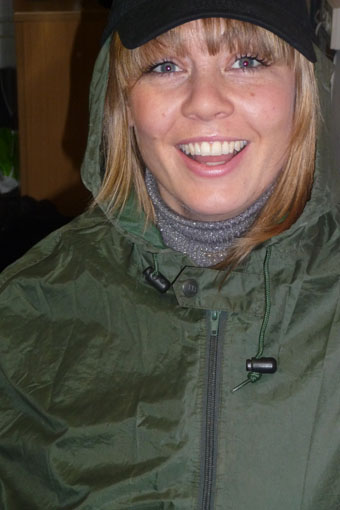
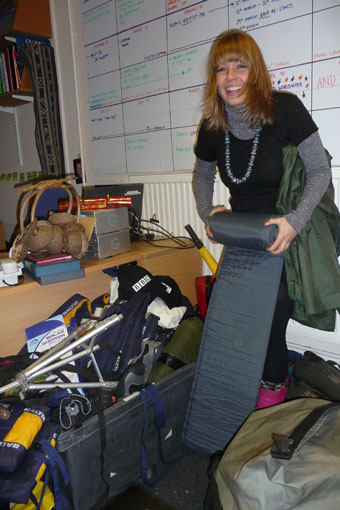
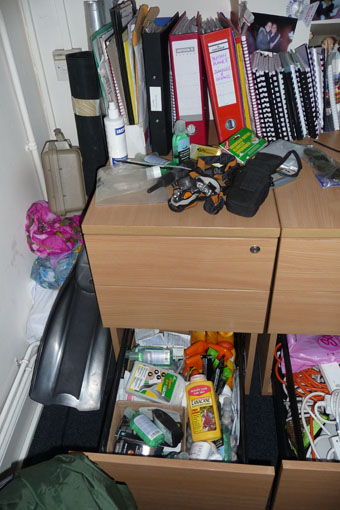

Mr. Hurt, I Presume?
by Dale Templar, Series Producer
John Hurt
When you’ve worked in television for over 20 years you get quite used to meeting and working with famous people. There are very few encounters that have ever really fazed me. One exception was meeting George Michael in a studio at the height of his solo career in the early 90s and, more recently, literally bumping into David Beckham behind the scenes at the O2 in London, with a beefburger in my mouth.
Well, a few weeks ago I was in another recording studio in Hampstead, North London waiting to meet one of our most truly talented British actors. I spotted him as he came through the door of the studio canteen and, as I walked towards him, a vast array of movies and characters flashed before me. Here was “The Elephant Man”, ” The Naked Civil Servant”, Harry Potter’s eccentric wandmaker and finally that stomach bursting scene from “Alien” leapt into my mind! Yes, it can now be officially confirmed that John Hurt is the voice of “Human Planet”. And what a voice! As soon as he shook my hand and said a simple “Hello, nice to meet you”, I just couldn’t wait to start our voice record session.
We spend months in edit cutting the pictures, crafting the films visually but we listen to the programmes with what we call scratch voices on them. At this stage, the script is usually recorded by the episode producer or, sometimes, the picture editor. They always do a great job but when the script is finally locked and we finally get to put on “the voice of the series”, a instant transformation occurs. The narrator gives it a unique identity. John’s resonant, commanding yet warm voice wraps itself around the pictures and draws you into the action and the characters. As I expected John was a consummate professional and we all worked incredibly hard, recording the voice-over for both the Arctic and Oceans episode. This is not an exact science but every line, every word is scrutinized. John had six sets of professional ears, including his own (which was usually the most critical), making sure everything was perfect.
What I loved was John’s dry sense of humour. In the Arctic script we do a scene which is effectively written as a pastiche of a television cookery show, of which we have many in the UK. Here was John Hurt doing his own wonderful interpretation of Delia Smith, or one of that ilk, reading out a recipe for how to prepare Kiviak, a Greenland delicacy, made from unplucked Arctic birds and a sealskin. A classic moment I will never forget.
Aug 20, 2010 | Categories: On Location | Tags: arctic, BBC; Human Planet;, commentary, Dale Templar, Greenland, John Hurt, Kiviak, narrator, oceans | Comments Off